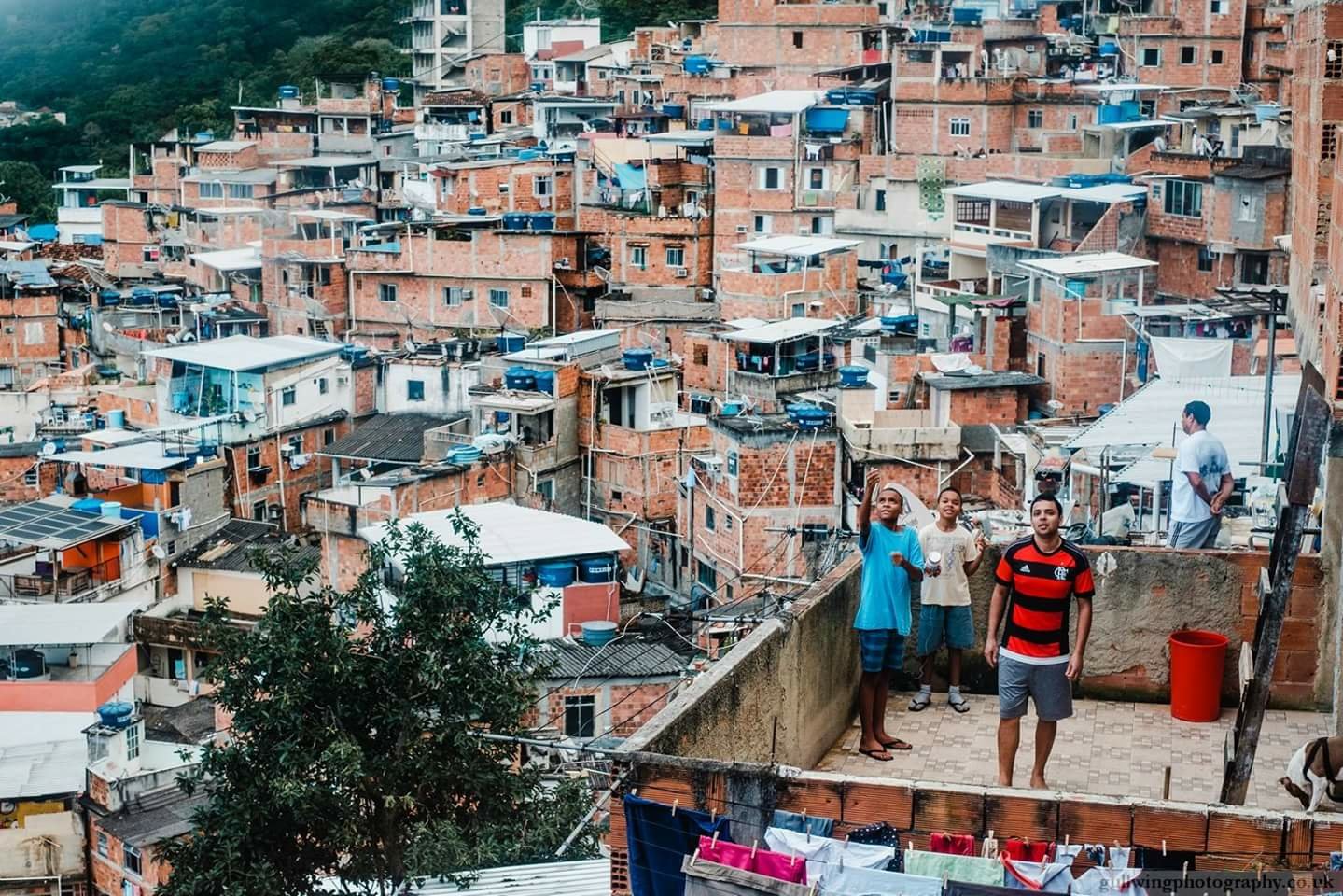
City of God. Elite Squad. Yes, I’ve seen them all, and they are fantastic films in their own ways. Also worth watching but slips under the radar a bit is Bus 174, a documentary about a bus hijacking in Rio which cleverly works in an entire sociological/economic history of the favelas into the story.
Basically, if you come from a favela, you’re starting off life very disadvantaged. There is no direct parallel with growing up anywhere in the UK: no matter how rough your council estate might have been, you still had a more fortunate (“privileged”) start in life than those who are born and grow up in Rio’s many favelas.
This is Santa Marta. One of the easiest to visit. However, that may not be saying all that much: the first day that I planned to visit saw a major firefight erupt between military police and dealers, with at least one fatality. So I gave it a couple of days before coming back to visit.
Getting one thing out of the way right away: at no point at all did I feel unsafe or unwelcome. As I have already tried to point out in previous posts, the vast majority of people living in these places are just like anybody, and like everybody else I met in Brazil, they were all really nice. Yes, there were very obvious dealers hanging around in various locations, though I didn’t actually see any guns. And, even with my subtle photography methods (at least I think they are), I only got a couple of shots of dealers. I do understand that they aren’t keen to have their photo taken, unlike the group of Kalashnikov wielding dealers that Rocket photographed in “City of God”.
All the favelas in Rio have drugs behind them. Some of them are controlled by dealers; others are controlled by corrupt cops (either serving or retired). Apparently it is quite common for people who do not live in the favelas to come to them for their drugs. This was something touched on quite heavily in Elite Squad: the people who allow the drug trade to flourish are often people who consider themselves quite liberal and enlightened. Unfortunately however, I would agree that they are directly contributing to human misery with their occasional joint.
In general though, normal people here just get on with their lives as best as they can. But it’s not easy. Children have to leave the favela to go to schools. To see a doctor or have any sort of medical attention, they have to leave. Utilities are patchy: despite the myth, the vast majority of people pay for their utilities (as well as paying taxes as normal), but services can be unreliable. Perhaps most importantly, most favelas do not have street addresses. Therefore, you cannot receive post except at a communal collection centre. And, ladies and gentlemen, that means that the whole world knows that you come from a favela. That limits your life choices. Because generally speaking, it seems that most Brazilians do not think very highly of people from the favelas.
Santa Marta is one of the few that has some street names, and apparently a couple of local residents have worked with Google to map out the streets for Google Maps. There is quite a lot of local pride in the street signs that can be seen lurking under bushes around the favela.
It is a totally normal place. Yes, it’s on a steep hillside, and the buildings are very roughly built (the people who live in them rarely own the land), and life is hard, but people there do make the best of their situation, and apart from the violence between cops and dealers and between rival gangs, they are safe and pleasant places. I didn’t feel any concerns about carrying a bag of quite expensive camera gear.
Ideally, everybody in the world should feel some pride in their local community and environment. It was certainly evident in Santa Marta, which when you come from a place where everything is stacked against you and life is hard, it is a great thing that people can feel proud of where they are from.
More photos: http://gullwingphotography.blogspot.com/2018/08/rio-santa-marta.html
